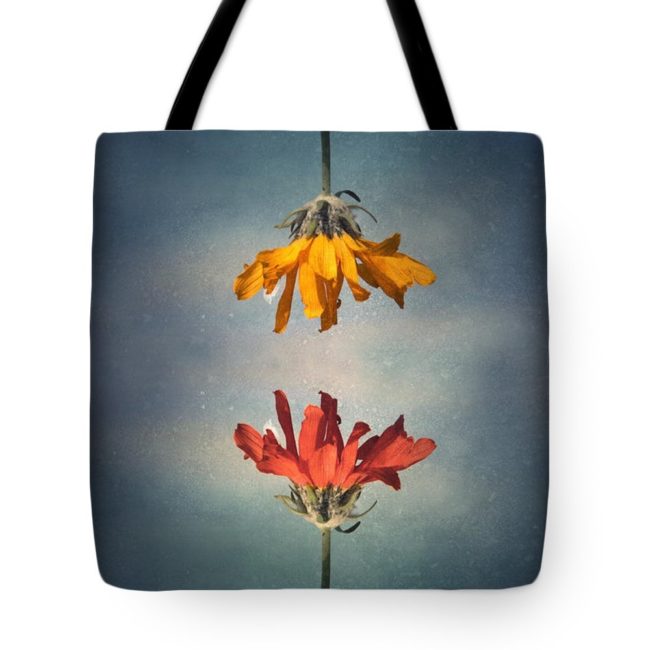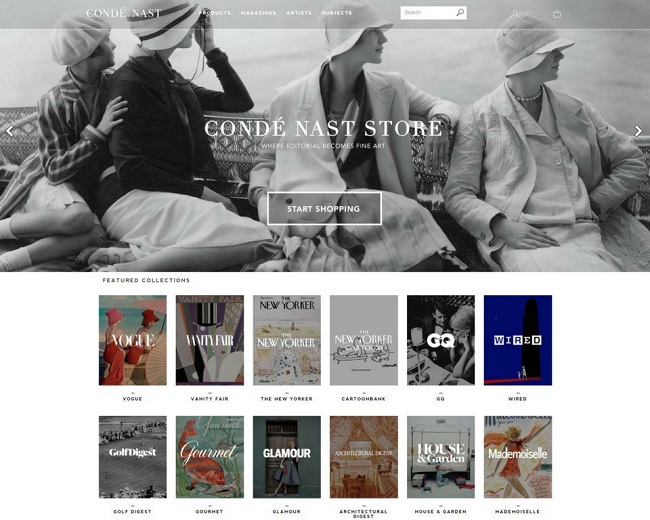This month, I had the privilege of interviewing Sean Broihier, CEO of Pixels, a technology and lifestyle company based in Santa Monica, California. Sean is a brilliant e-commerce entrepreneur. Over the past 10 years, he has quietly built global print on demand (POD) marketplaces through which more than 15 million images from 500,000 artists, photographers, and designers can be printed on more than 25 products.
Each artist or photographer who sells work through Pixels.com and FineArtAmerica.com can set their own prices for printing images in different forms of wall art, apparel, home decor products, promotional products, and gift items.
![]()
This week, Pixels announced an e-commerce partnership with Condé Nast, the premier media company behind some of the biggest brands in publishing, including Vanity Fair, Wired, Vogue, Glamour, Brides, Self, The New Yorker, GQ, Architectural Digest, Allure, and Bon Appetit. Condé Nast attracts more than 120 million consumers through its print, digital, and video platforms.
The partnership enables Condé Nast to make 40,000 popular images from 118 years of magazine publishing available as wall art. Some images are also available as home decor, fashion accessories, and apparel.
All products will be available for purchase through Pixels.com, CondeNastStore.com, and NewYorkerStore.com
“Condé Nast is known for its rich, creative legacy and association with some of the world’s most famed photographers and artists,” said Cathy Hoffman Glosser, senior vice president of licensing at Condé Nast. “This partnership with Pixels allows us to tap into our vast archive of iconic images and offer consumers greater access to the worlds they love, in an elevated environment audiences have come to expect from us.”
To Broihier, the Condé Nast partnership represents the perfect marriage of great imagery with software, manufacturing, and global distribution. “We have incredible technology in place that allows brands such as Condé Nast to transform any image into hundreds of unique products. They can sell those products worldwide without having to deal with overhead, inventory, production, or customer service.”
Items ordered through Pixels.com, Fine Art America, and the Condé Nast store are printed and quickly fulfilled through Pixels’ global network of 14 printing facilities in the United States, Australia, Canada, the United Kingdom, and The Netherlands.
Each contracted printing facility is highly automated with teams of employees dedicated to finishing and fulfilling orders from Pixels.com, Fine Art America, and brand partners. Each printing company is equipped to to handle the surge of orders that occurs in November and December.
Customization for the Masses
When you consider how many different images, products, and sizes are offered through Pixels.com and Fine Art America, it’s possible that more than one billion different items could be manufactured.
But of course, some art and designs will always be more popular than others. And a full-color nature image that looks spectacular as a large metal print won’t look nearly as vivid printed on a small T-shirt.
That’s why Broihier lets image creators control how their images will be priced and used.
Each seller gets to choose which of their images they want to make available for printing on which types of products.

Sellers set their own prices by adding a markup to the base production price Pixels establishes for each print-on-demand product. The artist collects 100 percent of the mark-up. Beginning artists may be happy to make $10 or $20 on a canvas print. Well-known artists and photographers can earn hundreds of dollars on each sale.
“It has always been my opinion that artists should be able to set their prices as high or as low as they want,” said Broihier.
This is a departure from traditional art-licensing practices in which the art publisher dictates the selling price of the print and tells artists how much royalty they will earn. An artist offered a 10 percent royalty must decide: “Am I willing to accept $5 for the sale of my art on a $50 canvas print or not?”
“Our set-your-own-price business model was a huge driver of affinity for our brand,” says Broihier.
Condé Nast has the same flexibility to choose which images to can be printed on what types of products and determine the retail prices for the items.
E-Commerce Pioneer
Broihier started his first e-commerce website, Fine Art America, in 2006. He opened Pixels later as a way to diversify into print-on-demand products other than wall art.

In 2006, artists and photographers were being urged to use the latest generation of wide-gamut, wide-format pigment-ink printers to print and sell their own images. But Broihier believed artists and photographers would prefer to outsource the printing, framing, and fulfillment so they could focus on what they do best — creating beautiful artwork.
But 11 years ago, selling art online was still a novel concept. Many art buyers were reluctant to buy art they hadn’t seen in real life. Art creators were leery about turning over their high-res image files for print-on-demand reproduction.
In 2006, the biggest online art platform was selling reproductions of famous works by well-known painters such as Picasso and Monet. Fine Art America was one of the first companies to open up an online sales platform to all of the living artists of the world.
“It took off pretty quickly,” says Broihier. “Once artists started getting paid, they had more confidence in the system and started telling their friends about it.”
Another challenge Broihier faced was that many of the web-to-print and e-marketing tools we take for granted today didn’t exist in 2006. So all of the software on his site is homegrown.
As the seller and buyer communities have grown, Broihier has responded to their requests for additional services. For example, he has developed tools that enable artists and photographers to sell their art wherever they chose.
Pixels recently launched a Shopify app. So if a Pixel seller already has a Shopify store, they can easily ensure that all orders for printed products that come through the Shopify store will go through the Pixels network for production and fulfillment.
Artists and photographers can also set up their own branded storefronts and e-mail marketing programs through Pixels and use marketing automation tools that will run promotional campaigns on Facebook or Twitter.
Pixels can also help artists create and print sell sheets to take to art fairs and exhibits. The sell sheets show how the artist’s own images will appear on products such as T-shirts, phone cases, tote bags, or other items.
Broihier has even set up tools for artists who want to license images that will be streamed by subscription to digital displays.
![]() Some technology is designed to help the buyers, too. With the augmented reality interface he included in the Pixels iPad app, art buyers can preview what the selected art will look like on their own walls. A 24 x 36-inch canvas print will appear on the wall exactly at 24 x 36 inches. As the buyer walks around the room, the app uses the iPad’s video camera and a unique tracking algorithm to keep the image perfectly positioned in the desired location on the wall.
Some technology is designed to help the buyers, too. With the augmented reality interface he included in the Pixels iPad app, art buyers can preview what the selected art will look like on their own walls. A 24 x 36-inch canvas print will appear on the wall exactly at 24 x 36 inches. As the buyer walks around the room, the app uses the iPad’s video camera and a unique tracking algorithm to keep the image perfectly positioned in the desired location on the wall.
What’s Next?
Now that Pixels has grown such a large community of talented artists, photographers, and designers, the company can easily launch other types of print-on-demand products.
For instance, if Broihier decides to start selling wall tapestries on Pixels, he would do the programming to automate the process. Because he runs a lean operation (and doesn’t report to outside investors), the programming might take just a few days.
Then he would invite members of the Pixels community to make images available for printed tapestries. If just 500 of the site’s 500,000 artist members chose to sell 10 of their images for wall tapestries, potential buyers would immediately have more wall tapestry options than a brick-and-mortar store would ever stock.
Sean Broihier takes pride in helping other small businesses grow. He says Fine Art America and Pixels have been profitable from the start and have never had to raise venture capital: “We are an independent company that is helping hundreds of other independent companies.”

